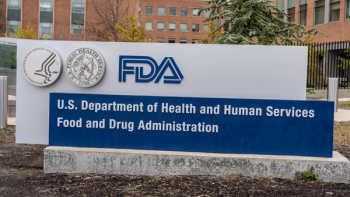
KOLs: An Endangered Buzzword
KOLs have traditionally exerted their influence through research and publication on drug safety and efficacy, but now share the stage with other important measures.
The term, “key opinion leader” (supported by its well-known acronym KOL) is one of the industry’s most common buzzwords, and for good reason. Physician KOLs have always influenced treatment guidelines and practice behaviors. They have traditionally exerted their influence through research and publication on drug safety and efficacy, which, while still valuable, must now share the stage with other important measures.
Today, medical practices are increasingly likely to be constrained by formularies, managed care, prior authorization, and step-care requirements. Such limitations are largely driven by cost considerations, and by the imperative to demonstrate the cost-effectiveness of any medical intervention. Consequently, unless it is a first-in-class, life-saving treatment for a type of cancer or rare disease, a new medication must show a clear cost benefit relative to other therapies in order to successfully launch and reach sales goals.
Today’s increasing focus on health economics runs counter-intuitive to the traditional pharmaceutical company model, in which demonstrating cost-effectiveness was an afterthought in the pursuit of regulatory approval; indeed, under the old model, cost-effectiveness studies were typically conducted in the post-marketing stage. There are four key factors underpinning the importance of health economics in the industry:
- Roughly 90% of prescriptions by volume are now generics but 90% of dollars go to branded products.
- The cost of healthcare continues to increase as the population ages and technology advances.
- Government has assumed a more active role as a payor, emphasizing the cost of care.
- The cost of developing a new drug continues to increase, in some cases exceeding $2 billion.
Following the maxim, “Who pays the piper calls the tune,” let’s look at the new class of PCSK-9 inhibitors as an illustrative example. These biologics can reduce LDL cholesterol (LDL-C)-the so-called “bad” cholesterol-by more than 80%, making PCSK-9 inhibitors the most significant advance in lipid control in a generation. They were launched in 2015 with great promise to prevent cardiovascular events by reducing LDL-C in people with known cardiovascular disease or heterozygous familial hypercholesterolemia uncontrolled by other means including statins. However, the first two PCSK-9 inhibitors that reached the market came with high price tags and failed to convince payers out of the gate of their cost-effectiveness benefit. Consequently, bodies such as ICER (the piper) called these drugs overpriced and not a good value. As a result, uptake of PCSK-9 inhibitors was well short of blockbuster status; these game-changing medications have still not reached the large population of at-risk patients who could benefit. The companies that launched these novel drugs continue to have difficulty obtaining private payor and CMS coverage, and are scrambling to identify sub-populations for incremental coverage-effectively shrinking the market for this class of therapies. Moreover, as payors follow ICER’s lead, KOLs are finding it difficult to swim upstream against this current of payor dominance.
Implications for KOLs as clinical trial investigators
For a clinical trial sponsor (or a CRO working on its behalf), it is no longer enough to assemble a roster of trialists and sites focused on traditional endpoints. In today’s rapidly evolving clinical development milieu, trial sponsors can get a leg up on competitors by recruiting KOL investigators who have conducted pharmacoeconomic studies and understand the bigger payor picture.
At Phesi, we consider the competitive environment in our approach to trial design and site selection. Additionally, we look at cost-effectiveness endpoints, such as resource utilization (e.g., ER visits, hospitalizations, complications), as well as patient-reported “real-world” data. The results of our analyses then factor into protocol design and site selection. We can potentially include patient cohorts from different payor plans to make the study population more robust. We can also help to guide early dialogue and design collaborative research with major payors by exploring risk-sharing reimbursement models.
All of this changes what the up-front questions in designing a clinical trial should be:
- What do we need to show so this drug/device, if proven safe and effective, can be utilized by as many people as appropriate?
- How will this product impact resource utilization and patient satisfaction?
- Do we need to set up registries now so they can bear fruit when the time comes for market access decisions?
Increasingly, medical KOLs are adapting to the changing landscape by morphing into cost-effectiveness KOLs, and that’s a good thing. They understand that asking questions such as those posed above will enable broader access to better-understood and more valuable therapies. Trial sponsors seeking a competitive advantage are well-advised to tap into this important resource.
Paul Chew, MD, Chief Medical Officer, Phesi
Newsletter
Lead with insight with the Pharmaceutical Executive newsletter, featuring strategic analysis, leadership trends, and market intelligence for biopharma decision-makers.




